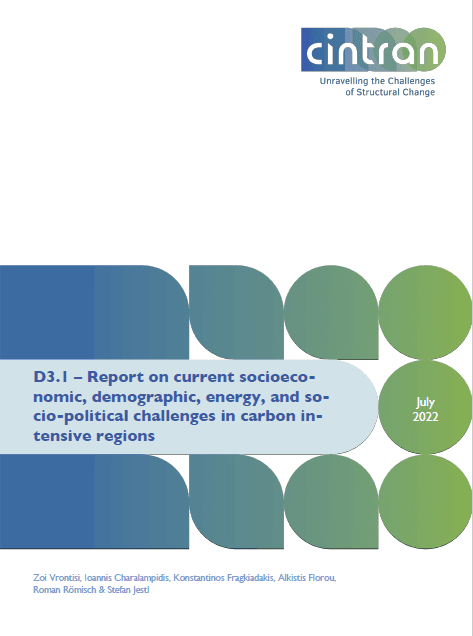Report on current socioeconomic, demographic, energy, and socio-political challenges in carbon intensive regions

Europe has committed to turning climate neutral by 2050. This commitment is articulated in the European Green Deal (European Commission, 2019), which coordinates policies and channels investments in sectors that will deliver the socio-economic transformation needed to reach climate neutrality. Cutting-edge, environmentally friendly technologies and innovation, massive roll-out of fossil-free transport, decarbonisation of the energy sector and the retrofitting of buildings are priority sectors.
Acknowledging however that the shift away from fossil fuels will not benefit equally all areas and sectors, the European Commission puts forward policies and financing mechanisms to ensure the transition happens in a just and socially fair way. Regions with economies that are highly dependent on fossil fuels, which are the focus of this study, are expected to carry a disproportionate share of the burdens of the energy transition. It is therefore critical to devise policies that are effective in alleviating this excess burden from affected areas. A first step to this direction is to identify the regions at risk. The study develops a socio-economic risk indicator and identifies the 15 EU regions likely to be affected the most from the transition. The indicator rests on the latest definition of the IPCC, which treats risk as the combination of Hazard, Exposure and Vulnerability.
The analysis reveals that the EU carbon intensive regions studied are relatively unattractive for the highly
educated and that the low level of their GDP is associated with higher net-emigration from these regions.
These findings point towards a general unattractiveness of carbon intensive regions, particularly in Central
and Eastern Europe, which are the ones challenged by net-migration outflows.